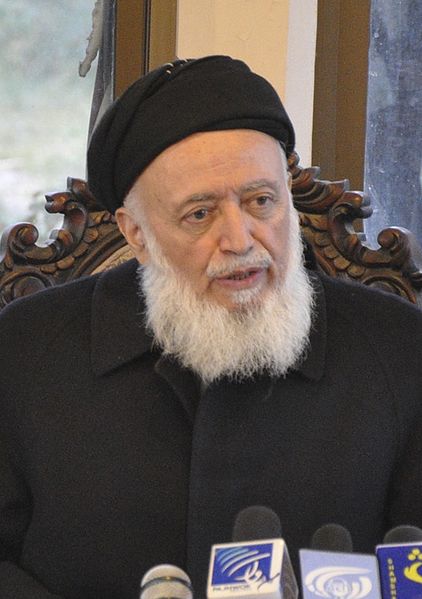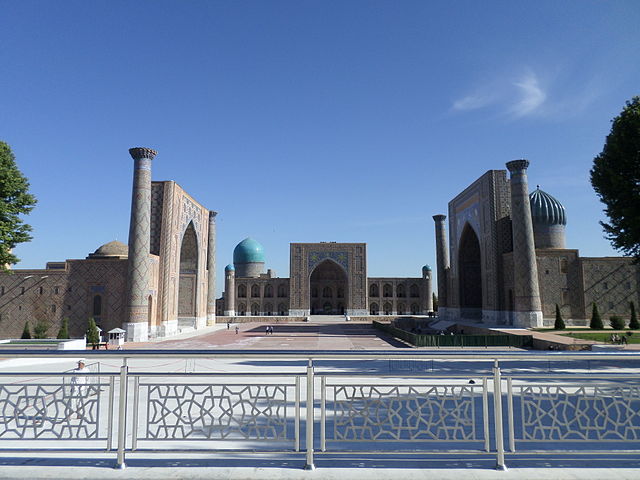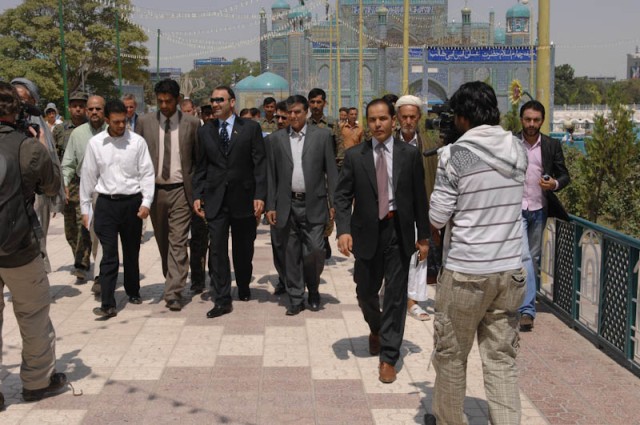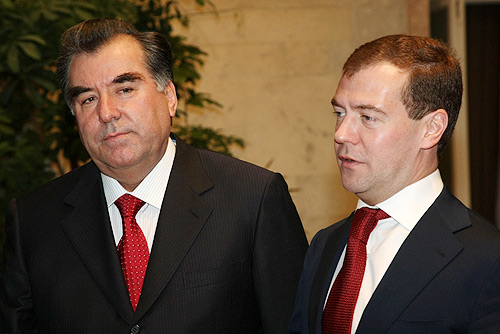
| TAJIKS
Tajiks Languages
: Persian (Dari and Tajiki), Secondary: Pashto, Russian,
Uzbek
Tajiks (Persian: Tajik) are a Persian-speaking Iranian ethnic group native to Afghanistan, Tajikistan, and Uzbekistan. Tajiks are the largest ethnicity in Tajikistan, and the second largest in Afghanistan which constitutes over half of the global Tajik population. They speak varieties of Persian, a Western Iranian language. In Tajikistan, since the 1939 Soviet census, its small Pamiri and Yaghnobi ethnic groups are included as Tajiks. In China, the term is used to refer to its Pamiri ethnic groups, the Tajiks of Xinjiang, who speak the Eastern Iranian Pamiri languages. In Afghanistan, the Pamiris are counted as a separate ethnic group.
As a self-designation, the literary New Persian term Tajik, which originally had some previous pejorative usage as a label for eastern Persians or Iranians, has become acceptable during the last several decades, particularly as a result of Soviet administration in Central Asia. Alternative names for the Tajiks are Eastern Persian, Farsiwan (Persian-speaker), and Dihgan which translates to "farmer or settled villager", in a wider sense "settled" in contrast to "nomadic" and was later used to describe a class of land-owning magnates as "Persian of noble blood" in contrast to Arabs, Turks and Romans during the Sassanid and early Islamic period.
History :
Tajiks in Bamiyan, Afghanistan The Tajiks are an Iranian people, speaking a variety of Persian, concentrated in the Oxus Basin, the Fargana valley (Tajikistan and parts of Uzbekistan) and on both banks of the upper Oxus, i.e., the Pamir Mountains (Mountain Badakšan, in Tajikistan) and northeastern Afghanistan and western Afghanistan (Badakšan, Kabol, Herat, Balkh, Mazar-i-Sharif, Ghazni and other urban regions). Historically, the ancient Tajiks were chiefly agriculturalists before the Arab Conquest of Iran. While agriculture remained a stronghold, the Islamization of Iran also resulted in the rapid urbanization of historical Khorasan and Transoxiana that lasted until the devastating Mongolian invasion. Several surviving ancient urban centers of the Tajik people include Herat, Samarkand, Bukhara, Khujand, Termez, Balkh and Kabul.
Contemporary Tajiks are the descendants of ancient Eastern Iranian inhabitants of Central Asia, in particular, the Sogdians and the Bactrians, and possibly other groups, with an admixture of Western Iranian Persians and non-Iranian peoples. According to Richard Nelson Frye, a leading historian of Iranian and Central Asian history, the Persian migration to Central Asia may be considered the beginning of the modern Tajik nation, and ethnic Persians, along with some elements of East-Iranian Bactrians and Sogdians, as the main ancestors of modern Tajiks. In later works, Frye expands on the complexity of the historical origins of the Tajiks. In a 1996 publication, Frye explains that many "factors must be taken into account in explaining the evolution of the peoples whose remnants are the Tajiks in Central Asia" and that "the peoples of Central Asia, whether Iranian or Turkic speaking, have one culture, one religion, one set of social values and traditions with only language separating them."
Regarding
Tajiks, the Encyclopædia Britannica states :
The geographical division between the eastern and western Iranians is often considered historically and currently to be the desert Dasht-e Kavir, situated in the center of the Iranian plateau.[citation needed]
Name :
The Samanid Empire (819 – 999) is considered the first Tajik state According to John Perry (Encyclopaedia Iranica) :
The most plausible and generally accepted origin of the word is Middle Persian tazik 'Arab' (cf. New Persian tazi), or an Iranian (Sogdian or Parthian) cognate word. The Muslim armies that invaded Transoxiana early in the eighth century, conquering the Sogdian principalities and clashing with the Qarluq Turks consisted not only of Arabs, but also of Persian converts from Fars and the central Zagros region (Bartol'd [Barthold], "Tadžiki," pp. 455–57).
Hence the Turks of Central Asia adopted a variant of the Iranian word, täžik, to designate their Muslim adversaries in general. For example, the rulers of the south Indian Chalukya dynasty and Rashtrakut dynasty also referred to the Arabs as "Tajik" in the 8th and 9th century.
By the eleventh century (Yusof Kass-hajeb, Qutadgu bilig, lines 280, 282, 3265), the Qarakhanid Turks applied this term more specifically to the Persian Muslims in the Oxus basin and Khorasan, who were variously the Turks' rivals, models, overlords (under the Samanid Dynasty), and subjects (from Ghaznavid times on). Persian writers of the Ghaznavid, Seljuq and Atabak periods (ca. 1000–1260) adopted the term and extended its use to cover Persians in the rest of Greater Iran, now under Turkish rule, as early as the poet ?On?ori, ca. 1025 (Dabirsiaqi, pp. 3377, 3408). Iranians soon accepted it as an ethnonym, as is shown by a Persian court official's referring to ma tazikan "we Tajiks" (Bayhaqi, ed. Fayyaz, p. 594). The distinction between Turk and Tajik became stereotyped to express the symbiosis and rivalry of the (ideally) nomadic military executive and the urban civil bureaucracy (Ni?am al-Molk: tazik, pp. 146, 178–79; Fragner, "Tadjik. 2" in EI2 10, p. 63).
According to the Encyclopaedia of Islam, however, the oldest known usage of the word Tajik as a reference to Persians in Persian literature can be found in the writings of the Persian poet Jalal ad-Din Rumi. The 15th century Turkic-speaking poet Mir Ali Šer Nava'i also used Tajik as a reference to Persians. An example for the usage of the word Tajik in Persian literature is, for example, the writing of Sa'adi :
Šâyad ki ba pâdšâh bigoyand
It's appropriate to tell the King,
Location :
Tajiks Celebrate Nawrooz in Afghanistan. Haft-Seen, White House ceremony for new Persian Year, prepared by Laura Bush The Tajiks are the principal ethnic group in most of Tajikistan, as well as in northern and western Afghanistan, though there are more Tajiks in Afghanistan than in Tajikistan. Tajiks are a substantial minority in Uzbekistan, as well as in overseas communities. Historically, the ancestors of the Tajiks lived in a larger territory in Central Asia than now.
Tajikistan
:
Afghanistan :
According to the World Factbook, Tajiks make up about 27% of the population in Afghanistan, but according to other sources they form 37%–39% of the population. According to the Encyclopædia Britannica they constitute about one-fifth of the population. They are predominant in four of the largest cities in Afghanistan (Kabul, Mazar-e Sharif, Herat, and Ghazni) and make up the largest ethnic group in the northern and western provinces of Balkh, Takhar, Badakhshan, Samangan, Parwan, Panjshir, Kapisa, Baghlan, Ghor, Badghis and Herat.
In Afghanistan, the Tajiks do not organize themselves by tribes and refer to themselves by the region, province, city, town, or village that they are from; such as Badakhshi, Baghlani, Mazari, Panjsheri, Kabuli, Herati, Kohistani etc. Although in the past, some non-Pashto speaking tribes were identified as Tajik, for example the Furmuli.
Uzbekistan :
In Uzbekistan, the Tajiks are the largest part of the population of the ancient cities of Bukhara and Samarkand, and are found in large numbers in the Surxondaryo Province in the south and along Uzbekistan's eastern border with Tajikistan. According to official statistics (2000), Surxondaryo Province accounts for 24.4% of all Tajiks in Uzbekistan, with another 34.3% in Samarqand and Bukhara provinces.
Official statistics in Uzbekistan state that the Tajik community comprises 5% of the nation's total population. However, these numbers do not include ethnic Tajiks who, for a variety of reasons, choose to identify themselves as Uzbeks in population census forms. During the Soviet "Uzbekization" supervised by Sharof Rashidov, the head of the Uzbek Communist Party, Tajiks had to choose either stay in Uzbekistan and get registered as Uzbek in their passports or leave the republic for Tajikistan, which is mountainous and less agricultural. It is only in the last population census (1989) that the nationality could be reported not according to the passport, but freely declared on the basis of the respondent's ethnic self-identification. This had the effect of increasing the Tajik population in Uzbekistan from 3.9% in 1979 to 4.7% in 1989. Some scholars estimate that Tajiks may make up 35% of Uzbekistan's population.
China
:
Kazakhstan
:
Kyrgyzstan
:
Turkmenistan
:
Russia
:
Pakistan
:
Genetics
:
Language :
The language of the Tajiks is an eastern dialect of Persian, called Dari (derived from Darbari, "[of/from the] royal courts", in the sense of "courtly language"), or also Parsi-e Darbari. In Tajikistan, where Cyrillic script is used, it is called the Tajiki language. In Afghanistan, unlike in Tajikistan, Tajiks continue to use the Perso-Arabic script, as well as in Iran. However, when the Soviet Union introduced the Latin script in 1928, and later the Cyrillic script, the Persian dialect of Tajikistan came to be considered a separate (Persian) language. [dubious – discuss] [citation needed] Since the 19th century, Tajiki has been strongly influenced by the Russian language and has incorporated many Russian language loan words. It has also adopted fewer Arabic loan words than Iranian Persian while retaining vocabulary that has fallen out of use in the latter language. In Tajikistan, in ordinary speech, also known as "zaboni kucha" (lit. "street language", as opposed to "zaboni adabi", lit. "literary language", which is used in schools, media etc.), many urban Tajiks prefer to use Russian loanwords instead of their literary Persian analogs.[citation needed]
The dialects of modern Persian spoken throughout Greater Iran have a common origin. This is due to the fact that one of Greater Iran's historical cultural capitals, called Greater Khorasan, which included parts of modern Central Asia and much of Afghanistan and constitutes as the Tajik's ancestral homeland, played a key role in the development and propagation of Persian language and culture throughout much of Greater Iran after the Muslim conquest. Furthermore, early manuscripts of the historical Persian spoken in Mashhad during the development of Middle to New Persian show that their origins came from Sistan, in present-day Afghanistan.
Religion :
Balkh Governor Atta Muhammad Nur after visiting the Blue Mosque in Mazar-i-Sharif's in northern Afghanistan Various scholars have recorded the Zoroastrian, Buddhist, and Aryan pre-Islamic heritage of the Tajik people. Early temples for fire worship have been found in Balkh and Bactria and excavations in present-day Tajikistan and Uzbekistan show remnants of Zoroastrian fire temples.
Today, however, the great majority of Tajiks follow Sunni Islam, although small Twelver and Ismaili Shia minorities also exist in scattered pockets. Areas with large numbers of Shias include Herat, Badakhshan provinces in Afghanistan, the Gorno-Badakhshan Autonomous Province in Tajikistan, and Tashkurgan Tajik Autonomous County in China. Some of the famous Islamic scholars were from either modern or historical East-Iranian regions lying in Afghanistan, Tajikistan, Uzbekistan and Turkmenistan and therefore can arguably be viewed as Tajiks. They include Abu Hanifa, Imam Bukhari, Tirmidhi, Abu Dawood, Nasir Khusraw and many others.
According to a 2009 U.S. State Department release, the population of Tajikistan is 98% Muslim, (approximately 85% Sunni and 5% Shia). In Afghanistan, the great number of Tajiks adhere to Sunni Islam. The smaller number of Tajiks who may follow Twelver Shia Islam are locally called Farsiwan[citation needed]. The community of Bukharian Jews in Central Asia speak a dialect of Persian. The Bukharian Jewish community in Uzbekistan is the largest remaining community of Central Asian Jews and resides primarily in Bukhara and Samarkand, while the Bukharaian Jews of Tajikistan live in Dushanbe and number only a few hundred. From the 1970s to the 1990s the majority of these Tajik-speaking Jews emigrated to the United States and to Israel in accordance with Aliyah. Recently, the Protestant community of Tajiks descent has experienced significant growth, a 2015 study estimates some 2,600 Muslim Tajik converted to Christianity.
Tajikistan marked 2009 as the year to commemorate the Tajik Sunni Muslim jurist Abu Hanifa, whose ancestry hailed from Parwan Province of Afghanistan, as the nation hosted an international symposium that drew scientific and religious leaders. The construction of one of the largest mosques in the world, funded by Qatar, was announced in October 2009. The mosque is planned to be built in Dushanbe and construction is said to be completed by 2014.
Recent
developments :
Emomalii Rahmon with then Russian President Dmitry Medvedev in 2009 The collapse of the Soviet Union and the Civil War in Afghanistan both gave rise to a resurgence in Tajik nationalism across the region, including a trial to revert to the Perso-Arabic script in Tajikistan. [citation needed] Furthermore, Tajikistan in particular has been a focal point for this movement, and the government there has made a conscious effort to revive the legacy of the Samanid empire, the first Tajik-dominated state in the region after the Arab advance. For instance, the President of Tajikistan, Emomalii Rahmon, dropped the Russian suffix "-ov" from his surname and directed others to adopt Tajik names when registering births. According to a government announcement in October 2009, approximately 4,000 Tajik nationals have dropped "ov" and "ev" from their surnames since the start of the year.
In an interview to Iranian news media in May 2008, Tajikistan's deputy culture minister said that Tajikistan would study the issue of switching its Tajik alphabet from Cyrillic to the Persian script used in Iran and Afghanistan when the government feels that "the Tajik people became familiar with the Persian alphabet". More recently, the Islamic Renaissance Party of Tajikistan seeks to have the nation's language referred to as "Tajiki-Farsi" rather than "Tajik." The proposal has drawn criticism from Russian media since the bill seeks to remove the Russian language as the mode of interethnic communication. In 1989, the original name of the language (Farsi) was added to its official name in brackets. However, Rahmon's government renamed the language to simply 'Tajiki' in 1994. On October 2009, Tajikistan adopted the law that removes Russian as the "language for interethnic communication."
Source :
https://en.wikipedia.org/ |
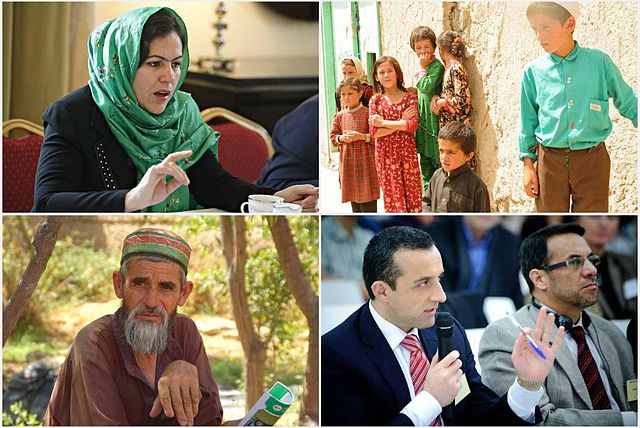
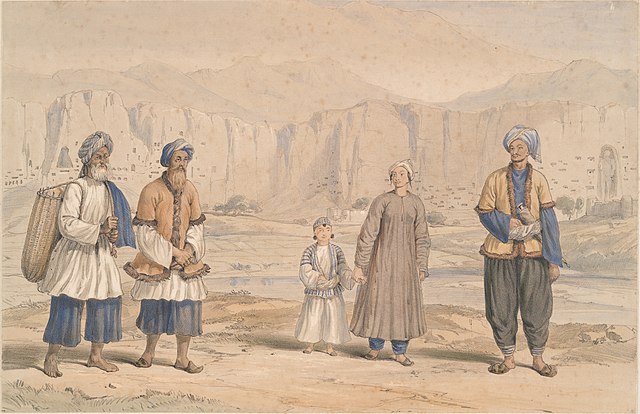
.gif)

